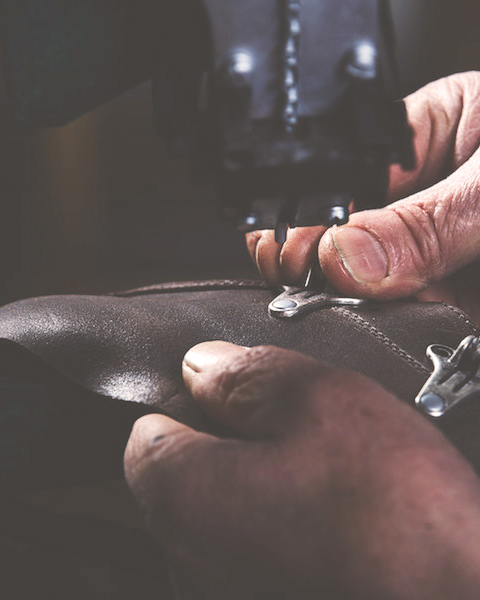How Ventesima Strada footwear born
A path that tells our passion
01 -
Hand lasting

The upperis adapted to the last using pliers, a hammer and nails. Only after several trials and adjustmentsis the final shape achieved that will fit the foot perfectly.
02 -
Clicking

Cutting by hand allows us direct contact with the leather and we can therefore ensure that it is top quality and does not have any defects.
03 -
Skiving

Skiving the leather is thinned down in certain crucial points which otherwise would reduce the comfort of the foot. Knowing where, how and by how much to thin the leather is an operation that requires experience and skill.
04 -
Marking

The leather is marked by hand to facilitate the complex process of closing with guidelines. In this way order is given to the various pieces that make up the shoe
05 -
Embroidery

Embroidering our trademark on the tongue of our footwear, never invasive and purposely designed not to compromise the aesthetic appearance, denotes our Vintage style and love of detail.
06 -
Riveting

Riveting is the process of fixing to the shoe the metal parts (commonly called "hardware") through which the laces are threaded. This is precision work and even a single mistake could cause irreparable damage to the shoe.
07 -
First sewing

Norwegian stitching, carried out by hand and an important feature of our shoemaking process, joins the leather welt to the upper.
08 -
Flattening

The flattening process folds the welt, originally straight, to an angle of 90 degrees, in order to prepare it for the next stage.
09 -
Second stitching

The second stitching fixes the midsole in shock absorbing material to the welt and concludes the Norwegian construction. It is 100% authentic and requires the same degree of master craftsmanship.
10 -
Gluing

The outsoles, with a typical "commando" pattern, are bound to the midsole made in EVA. The outsole is the fifth and final layer that insulates the foot from the ground.The upper layers are the: anatomic insole, lasting board in leather, filling and midsole.
11 -
Trimming and Buffing

Using a high-speed cutter the excess material is removed from the bottom of the shoe and, subsequently, it is dabbed to polish and finish the sole and the welt.
12 -
Finishing

Finishing comprises a series of around fifteen different operations, that range from cleaning the shoe and polishing it, adding the laces and packing in a box, labelling and inserting the anatomic insole.
